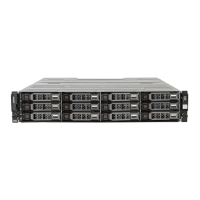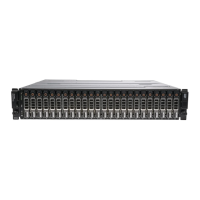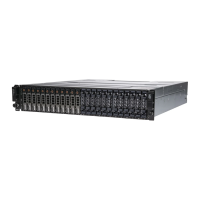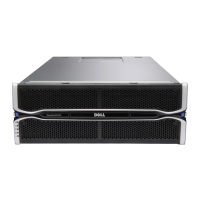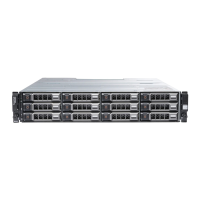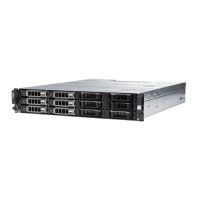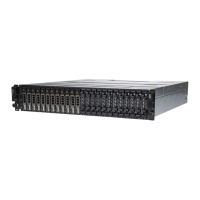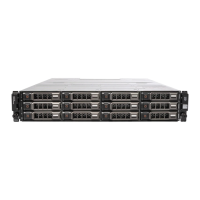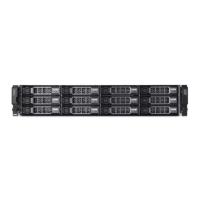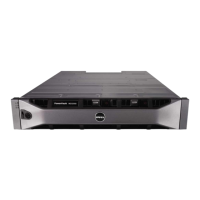Do you have a question about the Dell PowerVault MD3400 series and is the answer not in the manual?
Details minimum system requirements and supported operating systems for installation.
Specifies requirements for the management station used with MDSM for array configuration.
Explains the components and architecture of a storage array and how data is accessed.
Lists and describes other Dell documentation relevant to PowerVault systems.
Explains how to find the unique Express Service Code and Service Tag for system identification.
Provides instructions and web links for contacting Dell support and sales.
Instructions for providing feedback on the document, including email and web form options.
Considerations before installing a storage array, including data needs and backups.
Illustrates the ports and connections for RAID controller modules.
Details single and dual path data configurations for connecting storage arrays to hosts.
Explains nonredundant (single path) and redundant (dual path) configurations for data access.
Illustrates hosts connected to a single RAID controller module without redundant paths.
Illustrates hosts connected to two RAID controller modules, providing redundant paths.
Instructions for connecting MD1200 series expansion enclosures to the storage array.
Procedure for attaching pre-configured MD1200 expansion enclosures to the storage array.
Steps to attach new MD1200 series expansion enclosures to the storage array.
Recommended wizard-driven graphical interface for installing MD storage software.
Text-based installation procedure for Linux users without a graphical environment.
Procedure for creating scripted installations using property files.
Instructions for upgrading from a previous version of MDSM.
Steps to uninstall MD Storage Software from Windows operating systems.
Steps to uninstall MD Storage Software from Windows Server GUI versions.
Steps to uninstall MD Storage Software from Windows Server Core versions.
Procedure to uninstall MD Storage Manager from Linux operating systems.
Explains how multi-path drivers select I/O paths and the concept of load balance policies.
Describes the round robin with subset policy that routes I/O requests rotationally.
Explains the least queue depth policy for routing I/O to paths with fewest outstanding requests.
Details the least path weight policy that routes I/O to paths with the lowest weight value.
Instructions for changing load balance policies using Device Manager or Disk Management.
| Form Factor | 2U |
|---|---|
| Operating Temperature | 10°C to 35°C (50°F to 95°F) |
| Non-operating Temperature | -40°C to 65°C (-40°F to 149°F) |
| Non-operating Humidity | 5% to 95% (non-condensing) |
| Supported Drive Types | SAS |
| Cache Memory per Controller | 2GB or 4GB |
| RAID Levels Supported | 0, 1, 5, 6, 10 |
| Connectivity | 6 Gbps SAS |
| Drive Bays | 12 x 3.5" (MD3400), 24 x 2.5" (MD3420) |
